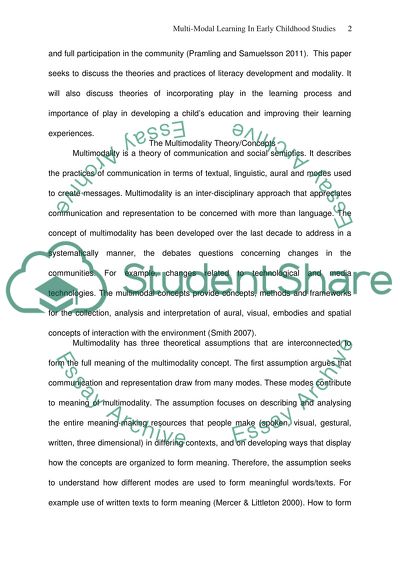Cite this document
(Multimodal Learning in Early Childhood Studies Essay Example | Topics and Well Written Essays - 3500 words, n.d.)
Multimodal Learning in Early Childhood Studies Essay Example | Topics and Well Written Essays - 3500 words. https://studentshare.org/education/1865796-multi-modal-learning-in-early-childhood-studies
Multimodal Learning in Early Childhood Studies Essay Example | Topics and Well Written Essays - 3500 words. https://studentshare.org/education/1865796-multi-modal-learning-in-early-childhood-studies
(Multimodal Learning in Early Childhood Studies Essay Example | Topics and Well Written Essays - 3500 Words)
Multimodal Learning in Early Childhood Studies Essay Example | Topics and Well Written Essays - 3500 Words. https://studentshare.org/education/1865796-multi-modal-learning-in-early-childhood-studies.
Multimodal Learning in Early Childhood Studies Essay Example | Topics and Well Written Essays - 3500 Words. https://studentshare.org/education/1865796-multi-modal-learning-in-early-childhood-studies.
“Multimodal Learning in Early Childhood Studies Essay Example | Topics and Well Written Essays - 3500 Words”. https://studentshare.org/education/1865796-multi-modal-learning-in-early-childhood-studies.


